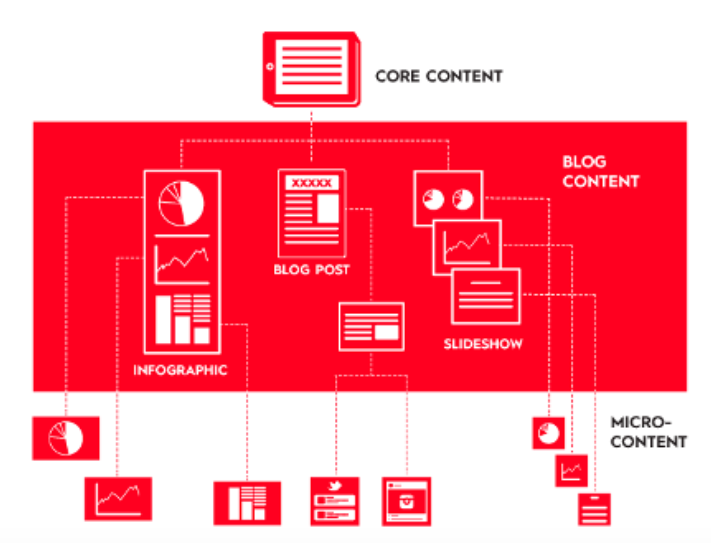3 Content Design Trends to Adopt Right Now
Strong content design is about much more than applying your brand identity or basic design principles. Good design is inherently good storytelling, delivering a core message through visual communication. But the way you tell that story through both content and distribution is changing.
As society, technology, and communication channels evolve, there are many more layers to consider if you want to create meaningful, impactful content that resonates with people. Here are three trends that are influencing the way we can—and should—design content.
1) Inclusive design
Good design is good storytelling, but the story you’re telling isn’t just the one in your creative brief. Every piece of content you create reflects your brand story—who you are, what you do, and what you care about. The way you design your content can say just as much about your brand as the content itself. Ultimately, despite your intentions, it’s how your content is received (and perceived) that matters most.
For example, I recently saw a promo video for a product for the visually impaired that included no voiceover narration. It was completely inaccessible to the very audience it was trying to target. While the brand had done well in designing the product, the promotion of said product was notably misguided.
As more and more organizations focus on Diversity & Inclusion initiatives, and larger cultural conversations continue to spotlight these gaps, designing for inclusivity will become more important. Remember that your content will be consumed by many people, especially if it’s early stage content focused on awareness, so it’s important to think about who your audience is, what their unique needs might be, and what barriers they may face when trying to interact with your content.
There are many factors that may affect how someone is included or excluded by content design, such as ability, language, culture, gender, age, etc. The goal of inclusive design is to create content that a wider diversity of people can consume. (Learn more about the difference between inclusive and accessible design.)
You need to consider how the core elements of design—color, type, imagery, animation, etc.—may be interpreted by or affect different people. What might that look like in practice?
- Designing websites for low or limited bandwidth, as many people don’t have equal access to Internet.
- Using tools like Adobe’s color blind safe palettes.
- Adding captions and alt text to online content.
- Breaking up large blocks of text to improve comprehension for people with learning disabilities.
These are little design tweaks that can drastically improve someone’s experience, make them feel included, and make them feel better about your brand.
Note: You probably won’t be able to flip the switch and make everything you create perfectly inclusive overnight. But you can start to apply these frameworks and look for opportunities to improve your content—both inside and outside of your company. (See Microsoft’s inclusive toolkit for more on this.)
2) Designing for platform
People consume content on a variety of platforms, but designers are often asked to take a one-size-fits-all approach to their design.
However, each platform has its own culture, audience, and technology, all of which should be considered in your content design. Ultimately, these platforms are about connection and engagement—not auto-publishing content. When you use the same content design across all channels, you can come off as uncreative (at best) and out of touch (at worst)—especially to devoted fans that follow you across all channels.
Whereas you may have once designed an infographic, then shared a preview of it on Twitter to promote it, to make a bigger impact, you might tailor your visuals to the specific audience on a specific platform. What is the aesthetic? The tone? The sense of humor? What type of content does your audience enjoy most?
The good news is this doesn’t have to be a chore. It’s an exciting opportunity to be creative, make the most of the tools at hand, and genuinely and authentically connect with audiences. That can take many forms, such as…
- Recreating a TikTok challenge in a unique way.
- Turning your regular content into an entertaining meme.
- Designing unique visual stories for Instagram.
- Incorporating video, polls, etc.
For example, Glossier is a beauty brand that could use TikTok to post beauty tutorials all day long, but they make the most of their presence by adding their own unique twist to popular TikToks. Here, they follow the “_____ as inspirational quotes” format, using mispronounced product names.
@glossier Yes, these are all real names we have heard people call Glossier products #inspirationalquotes ♬ original sound – Glossier
Remember: The more effectively you do this, the more you can demonstrate that you “get” your audience, know what they like, and are invested in giving it to them. This transforms the interaction from a one-way conversation (where you’re telling them what you want to tell them) to a two-way conversation that helps you form a genuine bond and share an experience, all through strong content.
3) Maximizing design
Marketing budgets have shrunk in the wake of the Pandemic. And many brands already struggled to produce high-quality content consistently, thanks to a lack of resources. (According to the Content Marketing Institute’s 2021 B2B Content Marketing Report, 63% of marketers cite content creation as a barrier to success.)
Design may not seem like a priority in these times, but it can drastically affect the way people consume your content and experience your brand—in ways that translate to your bottom line.
In fact, a 2018 McKinsey & Co. study found that design-driven companies experienced 32 percentage points higher revenue growth and 56 percentage points higher total returns to shareholders (TRS) growth over a 5-year period. (One online gaming company they studied experienced a dramatic 25% increase in sales after making a small tweak to the usability of its home page.)
Tl;dr? Design is something you don’t want to skimp on, but you can maximize your investment by being more intentional about the design you do create. One of the best ways to do this is by using a divisible content strategy, wherein you design content with the intention of using it in multiple applications.
This often involves the creation of a larger piece of cornerstone content, which is then broken into smaller assets. For example, you might produce a single e-book, break the e-book into a series of infographics, and create an Instagram story detailing the most interesting data points to promote the e-book on social media.
There are many other opportunities to get more mileage from your content. You can also…
- Combine existing assets to create a larger piece of content. This is an easy way to increase your content output without much additional work. For example, you might turn a series of blog articles into a new e-book.
- Repurpose specific assets in additional content to add a visual element without having to design custom assets. For example, a data visualization from a report may be reused in a blog article or on Twitter.
Not only does this cut down on design time (increasing ROI), it makes the content you have created far more effective by increasing…
- Reach: Creating smaller assets or teasers from cornerstone content can help you promote across platforms, helping you reach more people through a variety of formats.
- Shelf life: Some pieces of content go stale quickly, especially if you’re talking about data or recent research. But there are elements of design, such as illustration, that are easy to repurpose into any number of pieces of content.
- Creativity: If you plan to turn a single piece of content into multiple supporting pieces of content, you have more freedom to experiment with format, design styles, etc.
That said, to do a divisible content strategy successfully, you do need to apply your visual language consistently. This ensures your content remains uniform and recognizable, no matter how you use or reuse it.
Looking toward the future
The design world is ever-evolving, but the key to all content—regardless of what you’re creating—is providing true value to your audience. As you go forward, think of ways to apply design more intentionally, optimize for comprehension, and increase appeal one piece at a time. The more successfully you do that, the more you’ll outshine the competition and create lasting connections with a community of fans.
________________
This article is part of the Society of Digital Agencies (SoDA) 2021 “The Next Model Agency” report. It is republished here on the Media Temple blog with permission from SoDA. SoDA serves as a network and voice for entrepreneurs and innovators around the globe who are creating the future of marketing and digital experiences. To learn more about SoDA and its other initiatives, please visit www.sodaspeaks.com.






